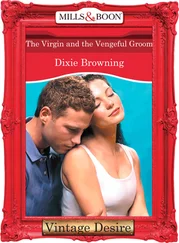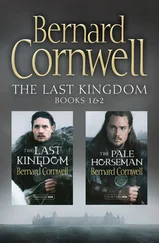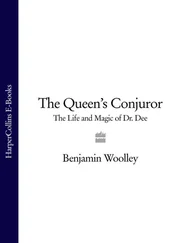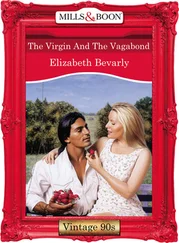He seemed well-informed, having somehow managed to see a copy of a letter from George Percy smuggled to his brother the Earl of Northumberland, who was still languishing in the Tower for his involvement in the Gunpowder Plot. ‘They have fortified themselves and built a small town which they call Jamestown,’ Carleton added, ‘and so they date their letters.’ He then proceeded to produce a series of convoluted puns ridiculing the settlers’ efforts. Never mind a supply from England, they could expect a ‘double supply’ from the Spanish – a mission sent to wipe them out. ‘The town methinks hath no graceful name,’ he mused, pointing out that it was not only dangerously close to Spanish Florida, but came ‘too near Villiaco’, meaning villainy. George Percy, he noted, called the town ‘James-fort, which we like best of all the rest, because it comes near to Chemesford’, Chelmsford, a town in Essex which one Puritan inhabitant described as a ‘dunghill of abomination’.
Carleton then added a postscript about Captain George Weymouth. Weymouth had apparently been ‘taken’ the week before, ‘shipping himself for Spain, with intent as is thought to have betrayed his friends and showed the Spaniards a means how to defeat this Virginian attempt’. 8
Carleton, who was usually well informed on political matters, was obviously unaware that Weymouth had been ‘shipping himself for Spain’ on Cecil’s orders. However, he was correct in guessing that the mission somehow threatened ‘to defeat this Virginian attempt’, for as soon as Newport arrived back in England, the government made strenuous efforts to prevent Weymouth from leaving the country. 9 For the sake of his cordial relations with Spain, Cecil had evidently been poised to abandon England’s claim to North America, and only the belated appearance of Newport’s ship had won a stay of execution.
Don Pedro de Zuñiga, the Spanish ambassador, had remained poorly informed about the Virginia mission since the issuing of the patent. He was aware that some sort of venture was under way, but felt it was too insignificant to bother his King. News of Newport’s return seemed to reinforce his complacency. ‘They do not come too contented,’ he told the King in a monthly report, ‘for in that place there is nothing other than good wood for masts, pine-tree pitch and resin, and some earth from which they think they can extract bronze’. 10
A month later, however, Zuñiga’s tone was transformed. ‘They are mad about the location,’ he reported to the Spanish King, ‘and frightened to death that Your Majesty will throw them out.’ Preparations were in hand for a supply mission, and ‘many here and in other parts of the kingdom … are already arranging to send people there’. ‘It would be very advisable for Your Majesty to root out this noxious plant while it is so easy,’ Zuñiga concluded.
Zuñiga had undergone such a radical change of mind since recruiting one of the members of the Royal Council for Virginia as an informer. The spy’s identity is unknown, but a candidate is Sir Herbert Crofts, who had joined the council in March 1607. Crofts, probably a kinsman of the planter Richard Crofts, is known to have become disenchanted with James’s regime, and a decade later fled to the Spanish Netherlands, where he ‘turned popish’. 11
In the following month’s dispatch, Zuñiga reported that ships were ready to take a new supply to the colony, together with one hundred and twenty fresh settlers. He once again urged Philip to preempt the enterprise by launching an attack. ‘It is thoroughly evident that it is not their desire to people [the land], but rather to practise piracy, for they take no women – only men.’ He also reported that James was ‘urging the Scots to go there’. 12
Philip commanded Zuñiga to speak to King James about the matter, ‘expressing regret on my part, that he should permit any of his subjects to try and disturb the seas, coasts, and lands of the Indies’. Zuñiga duly asked Cecil for a royal audience, but for several months, his requests were ignored. 13
Then, on the night of Saturday 26 September, an invitation from the Royal Chamberlain unexpectedly arrived at the ambassador’s residence in Highgate. Having been indisposed for a week, following the death of his infant daughter Mary, His Royal Highness now felt able to grant Zuñiga an audience at 2 p.m. the following day. The venue was to be Hampton Court, the magnificent royal retreat on the bank of the Thames west of London.
Zuñiga arrived at the palace at the appointed time, and was shown into the State Apartments, where James was waiting for him. He was welcomed ‘as usual, very courteously’. The ambassador passed on condolences on the death of the King’s daughter, for which James thanked him ‘very much’.
The formalities dispensed with, Zuñiga got straight to the point. King Philip, he said, considered it ‘against good friendship and brotherliness’ for English subjects ‘to dare to want to settle Virginia, since it is a part of the Indies belonging to Castile, and that this boldness could have inconvenient results’. ‘Inconvenient’ was the diplomatic word for deadly. Spain, he was suggesting, was prepared to go to war over the issue.
James affected insouciance, claiming ‘he was not informed as to the details of what was going on, so far as the voyages to Virginia were concerned’. He had ‘never known’ Philip ‘had a right to it [Virginia], for it was a region very far from where the Spaniards had settled’. Nevertheless, he did not want the matter to become a point of contention between him and Spain. The settlers, he said, ‘went at their own risk, and if they were caught there, there could be no complaint if they were punished’. In other words, if Spain chose to attack the colony, there would be no English reprisals.
Zuñiga was not satisfied; at least, not according to the version of the conversation he reported to Philip. The whole enterprise was, the ambassador told James, a ‘shabby deceit, for the land is very sterile, and consequently there can be no other object in that place than that it seems good for piracy’. James was inclined to agree. He too had heard ‘that the land was unproductive, and that those who thought to find great riches there were deceived’. He also thought that the sort of people who had gone there were ‘terrible’.
There followed a discussion on other matters, including Irish affairs and the indiscipline of James’s English Parliament, a body which they agreed had become a ‘ poblacho ’ (dump). Zuñiga then prepared to take his leave. Thanking the King for his time, he urged him again to find a remedy ‘for the Virginia affair’ as soon as possible. James said he would ‘look into the matter’, and promised that the Privy Council would give Zuñiga ‘satisfaction’. 14
Over the following few days, Zuñiga sent several messages to the Privy Council at ‘Moptoncurt’ (his Spaniolated rendering of Hampton Court), urging decisive action. Cecil eventually agreed on a meeting to finalize matters. Having studied the relevant treaties, Cecil (according to Zuñiga) agreed that the English ‘cannot go to Virginia’. Furthermore, he accepted that ‘if something bad happens to them, let it be their fault’.
With typical inscrutability, Cecil simultaneously told Smythe he wanted ‘a speedy dispatch of the ship intended to be sent to Virginia’. 15 This instruction, together with Newport’s decision to rejoin the expedition, energized frantic efforts to equip and man two ships hired for the purpose, the John & Francis , and the Phoenix , both 250 tons.
As always, the expedition was desperately underfunded. To provide the settlers with cloth to keep them warm through the winter, Sir Thomas Smythe was reduced to buying moth-eaten samples left over from a previous East India Company voyage. 16
Читать дальше












